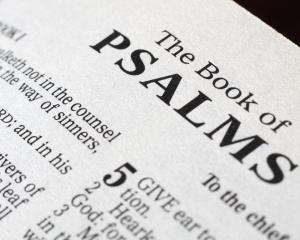The crowds who queued for a last, lingering look at Christchurch's cathedral the past two weekends are testimony to the special place it has held in the city's sense of its identity. Christchurch without the cathedral soaring over Cathedral Sq will be lacking a loved and distinctive symbol.
But the run of earthquakes that shattered much of the city has doomed it to demolition, and I share the sense of loss. As a boy, I attended in 1950 the open-air service in Cathedral Sq marking Canterbury's centennial, when the Archbishop of Canterbury, Dr Geoffrey Fisher, preached on a New Testament verse referring to the faith of the Hebrew patriarch Abraham: "He looked for a city which has foundations, whose builder and maker is God."
The archbishop was, of course, talking of the spiritual foundations on which the new settlement was founded. The cathedral expressive of those foundations was begun in 1864, and despite damage from five earthquakes between 1881 and 2010, the structure held.
That last phrase recalls a book published by the German-American theologian Paul Tillich two years before Dr Fisher preached in Christchurch - only he was writing of Christianity's theological foundations. Not God as a supernatural being above, said Tillich, but God at depth, the ground of all being.
For Christchurch, Tillich's title, The Shaking of the Foundations, has a double thrust: the physical destruction of the cathedral, and the faith the cathedral was built to express. For through its life span that faith has also been shaken - by the avalanche of new knowledge that shapes the modern world in physics, biology, astronomy, geology, psychology and, not least, the new horizons that biblical scholarship has opened up.
So for Anglicans contemplating what they will do once the cathedral has come down, the question is how they will affirm Christianity in a way that is part of the new world rather than the old. Will nostalgia pull them backwards?
Or will faith, in the sense of a trusting orientation to life and its possibilities, impel them forward?
The best church architecture has always reflected an understanding of God, the people of God, and the church's relationship with the community of which it is part.
Christchurch's cathedral was built for settlers intent on transplanting their English heritage into their new setting.
It reflected the Anglican establishment of their homeland: Victorian, class-conscious, still untouched by revolutionary changes emerging in the sciences and in new techniques of biblical exploration. A cathedral in the medieval Gothic style was a solid and reassuring reminder of "Home".
Times have changed. Tillich and others have shaken the foundations of Christian theological thinking by challenging the view that loyalty to the ancient traditions means holding fast to understandings and doctrines forged for a world long gone.
Some people are appalled by that, and fight fiercely to maintain their cherished beliefs and rituals. Others see the inevitable rethinking as a sign of life and hope.
The situation facing Christchurch Anglicans today is not the same as in the 1860s. So what sort of theology will they seek to express through their new cathedral?
That based on a creed hammered out by 4th-century Greeks presided over by a Roman emperor?
The 39 Articles adopted by the English Church after its break from Rome in the 16th century?
A theology growing out of Tillich, Dietrich Bonhoeffer, Teilhard de Chardin, John A.T. Robinson, the Jesus Seminar and others who have nudged their churches towards a faith responsive to the 21st century?
Will the new cathedral be a monument to traditionalism?
Or will it reflect a bold vision, open to whatever the future may hold?
Will it break new ground by inviting other denominations to join in finding a way forward together?
Would those denominations be of a mind to respond?
Will there be an opportunity for the wider community also to share in the discussion and, implicitly, in the cathedral's future use?
And share the cost?
Will the design reflect New Zealand's unique environment and concerns?
The way the Christchurch diocese answers such questions will shape people's impressions of what the cathedral is about, what the Anglican Church is about, and what the Christian gospel is about.
They are also relevant to every other denomination whose foundations have been shaken: a heaven-sent opportunity from the ground of their being.
• Ian Harris is a journalist and commentator.












